Arguably one of Spain’s most significant contributions to global gastronomy, the tapa comes in all shapes and sizes, from the humble olive or a few potato chips all the way through to miniature banquets. The pincho, the tapa’s larger and more elaborate cousin, is to be found in the Basque Country, most notably in San Sebastián. The price of tapa or pincho varies: some are offered free with a caña of beer or a glass of wine, and others are charged separately. Below, are 10 Spanish cities where tapas are offered free with drinks or some might say included in the price of the drink and to be honest, if the price of the drink is slightly more, the tapas are so good the increase in price is negligible and well worth it.
Alcalá de Henares
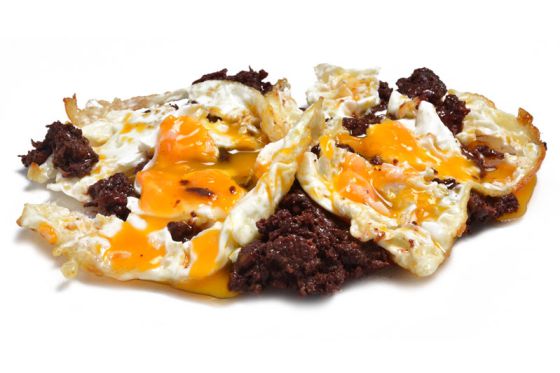
A visit to the historic town of Alcalá de Henares, birthplace of Cervantes and just half an hour from central Madrid, is not complete without taking in a tapa or two in the old quarter, where any number of bars will be happy to provide a free munch. There are Patatas bravas (fried potato with hot sauce), huevos estrellados (fried eggs on a bed of crispy French fries), a humble sandwich mixto (toasted cheese and ham), hamburgers, and a wide variety of bocadillos (filled bread rolls). Among the hot spots are Índalo, El Tapón, or Maimónides. The price of a beer in these places is around €2.80, which is at the pricier end of the scale, but the generous tapas more than make up for it, such as a fried egg with morcilla (blood sausage).
Ávila
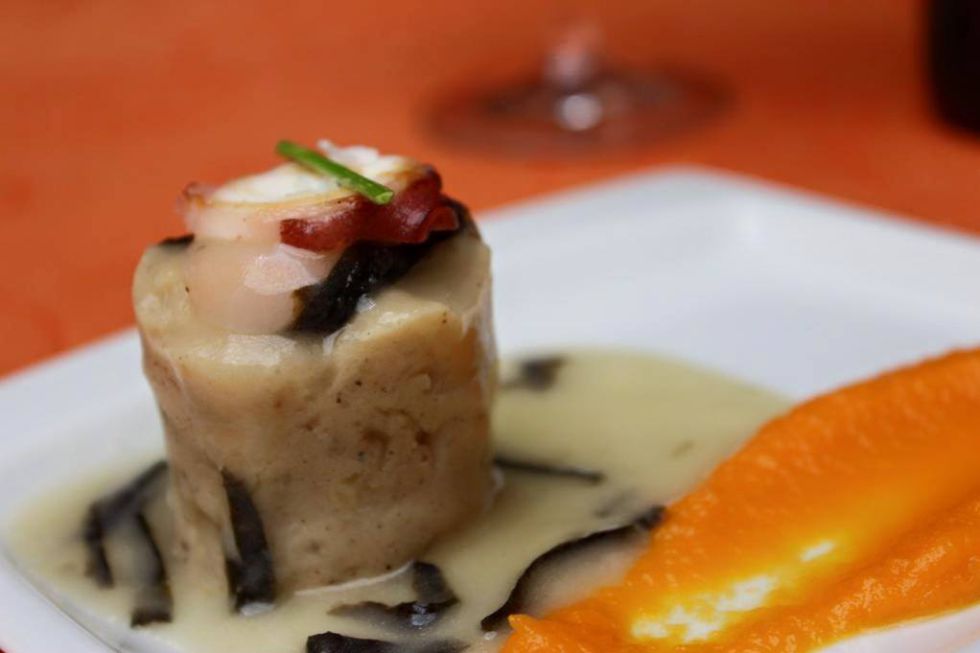
(The tower of Babel tapa at Las Cancelas, Ávila.)
The tradition in Spain’s highest city – and one of its coldest – is for customers in bars to choose their own free pincho, making it important to know what to ask for, and where to ask for it, which means patatas revolconas (mashed potato mixed with paprika and chunks of crispy pork belly) in Barbacana in the old market, or pig’s ears, snouts and much more in El Rincón, next to the town hall. Nearby, stewed wild boar can be found in Gredos, or chorizo mincemeat in Don Camilo. For a divine (this is the birthplace of Saint Teresa) tortilla de patata (Spanish omelette) try El Rincón de Jabugo in San Segundo street, opposite the cathedral. The house speciality at Las Cancelas, in Cruz Vieja street, is the tapa de la alegría, skewered kidneys with potato. The price of a beer here is between €1.20 and €1.90.
Almería
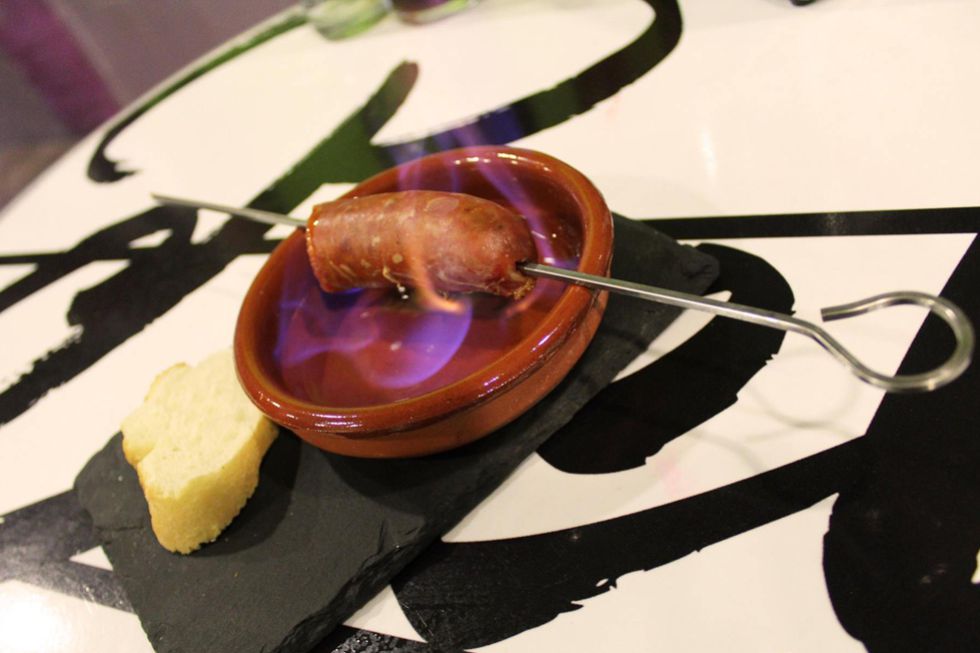
(Infernal chorizo at Bella Ciao in Almería.)
A wander through the old quarter of this Andalusian port city yields a plethora of bars offering abundant and free tapas with each drink, which typically costs around €2. El Bonillo, popular with locals since time immemorial, has delicious Patatas a la brava, while the recently opened Bella Ciao has remojón, a broth made from dried tomatoes and hot peppers, typically with salt cod. Tío Tom, in the nearby Zapillo neighbourhood, is popular for its generous tapas.
Badajoz

(Matured cheese and Iberico ham at La Corchuela, Badajoz.)
Badajoz, on the Portuguese border, is one of Spain’s tapa capitals. Most bars provide something to munch on with the beer and wine they serve, but there are three neighbourhoods particularly worth noting: Valdepasillas, San Roque, and Santa María de la Cabeza. The latter manages to bring together, in equal parts, low prices and large portions (fried potatoes, chicken wings, pasties…) La Roca (Ricardo Carapeto street) the venerable La Corchuela (Meléndez Valdes street), Bar Manolo (Muñoz Torrero street), or Mehtura (Jacinta García Hernández street) are just a few of the bars where beer tastes better with higadillos (chopped liver), mashed tomatoes, prueba de matanza (chorizo mincemeat), pancetta (fried belly pork), or fried eggs with chorizo. Beers cost around €1.20.
Granada
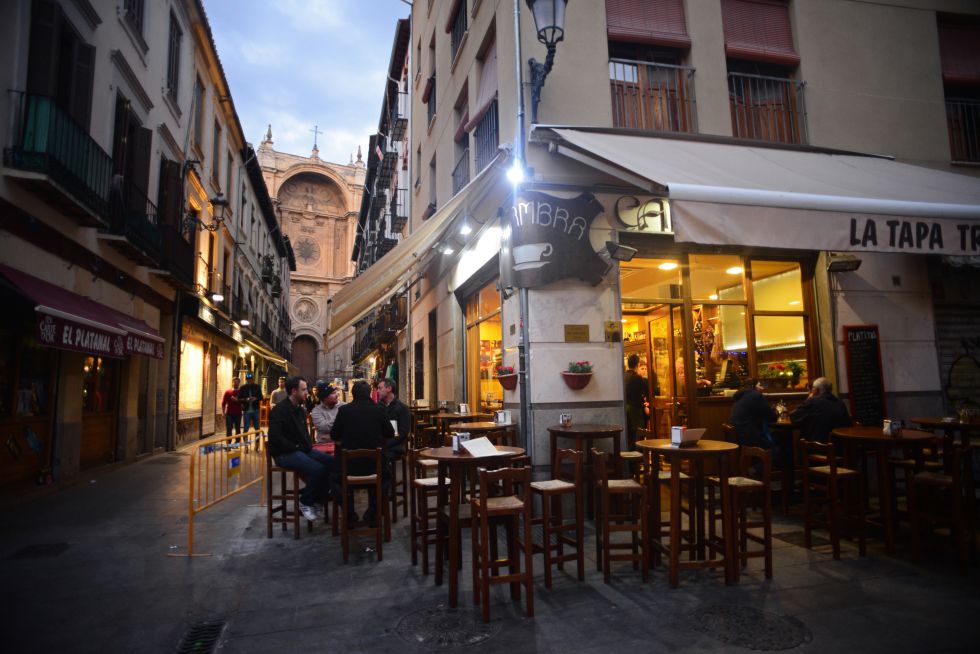
(The Alhambra tapas bar, next to Granada’s cathedral.)
As if the Alhambra weren’t enough, Granada also offers the visitor a warm welcome, masses of culture, and perhaps most importantly, very generous tapas: three or four are usually enough for a meal. Just about every bar in the city competes to provide the best or the most abundant. One of the best areas is around the bullring and the Realejo neighbourhood. You can get a taste of what’s on offer at Antigualla II (Elvira street), El Pesaor (Pío Baroja street), Bodegas Castañeda (Almiceros street), or Los Pescadores (Dr. Pareja Yébenes street). Prices for a drink range from €1.40 and €2.20 depending on the place and tapa you choose.
Jaen
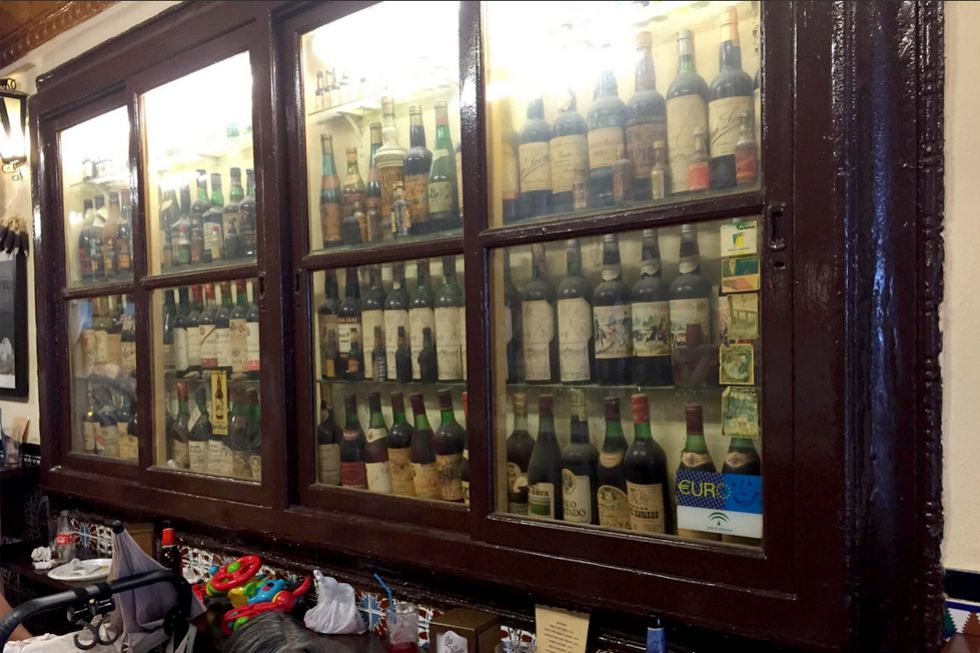
(La Barra, one of Jaén’s best-known bars.)
In Jaén, tapas means tascas, and the historic centre of the city is filled with these revered bars, which seem to have been here since the dawn of time. The best places for a free feed with your beer or wine are to be found on Arco del Consuelo, a narrow street a stone’s throw from the cathedral. Try Casa Gorrión or La Manchega. Close by is La Barra, on Cerón street, where the house speciality is morcilla (black pudding) with migas (chunky bread crumbs lightly fried in olive oil and garlic). There are also free tapas to be had a couple of hundred meters away in the streets around the church of San Ildefonso in bars such as El perol de la abuela, as well as in the Gran Bulevar, near the railway station, such as Tito Nono (Cataluña street), which also serves reasonably priced larger portions, known as raciones. The typical price of a beer, is between €1.30 and €1.50.
León

(Cervezería Flandes, Leon)
The bars of this bustling northern city has a long tradition of serving free tapas with wine or beer, and going out for a drink usually means eating as well. The best place to head is the old quarter, with its Romántico and Húmedo neighbourhoods. Among the top tapas spots are Ribera, famous for its potatoes, Flandes for boiled ham, or the morcilla at La Bicha. Then there is el Miche, el Llar, and La Trébede, all of the classics. For something newer and trendier, try Camarote Madrid, Monalisa, Flechazo, Gaia, and El Patio. Beers tend to cost around €1.60, with wines a little pricier at around €2.
Salamanca
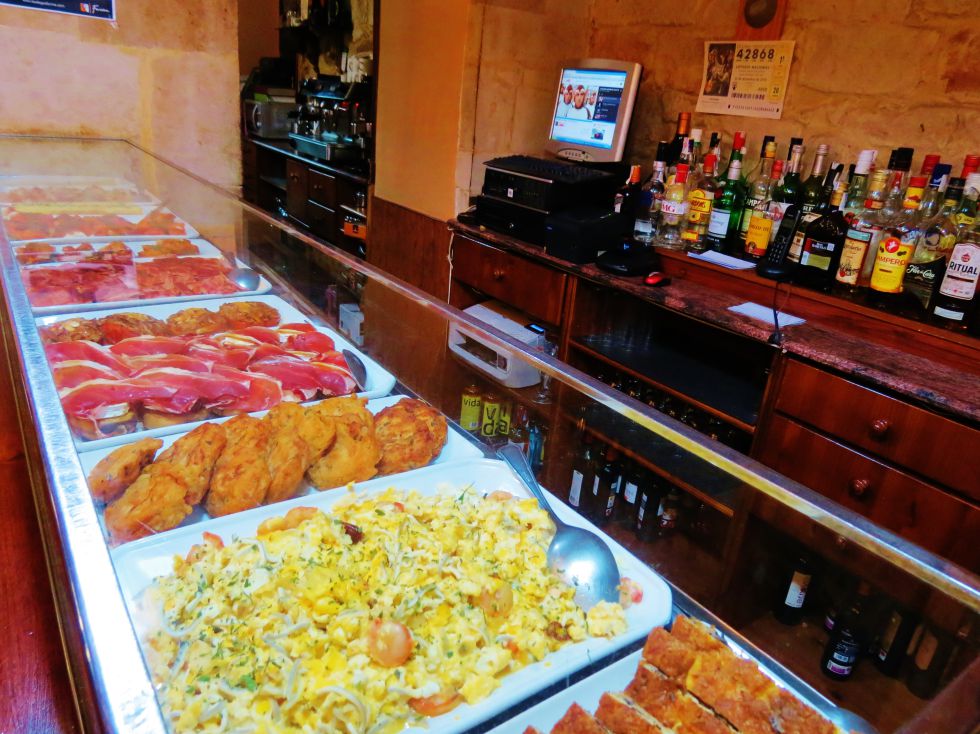
(Tapas on parade at El Bardo, Salamanca)
Perhaps because of its huge student population, the price of a beer and a generous pincho in Salamanca is still less than €2. Pork is the raw material here, in all its varieties: Guijuelo cured ham, jeta (cheek), pincho moruno (skewered pork chunks), or farinato sausage from nearby Ciudad Rodrigo. The best areas for tapas are the old quarter and Van Dyck. The morcilla with caramelized onions is a must at El Bardo, as are the pinchos morunos and patatas meneás (mashed, with paprika and crispy pork belly) at the Café Real, while the Mesón Cervantes has a wide variety of different tortillas. Bambú is the place to try a local delicacy, chanfaina salamantina: stewed rice with lambs’ trotters, cumin, and paprika.
Segovia
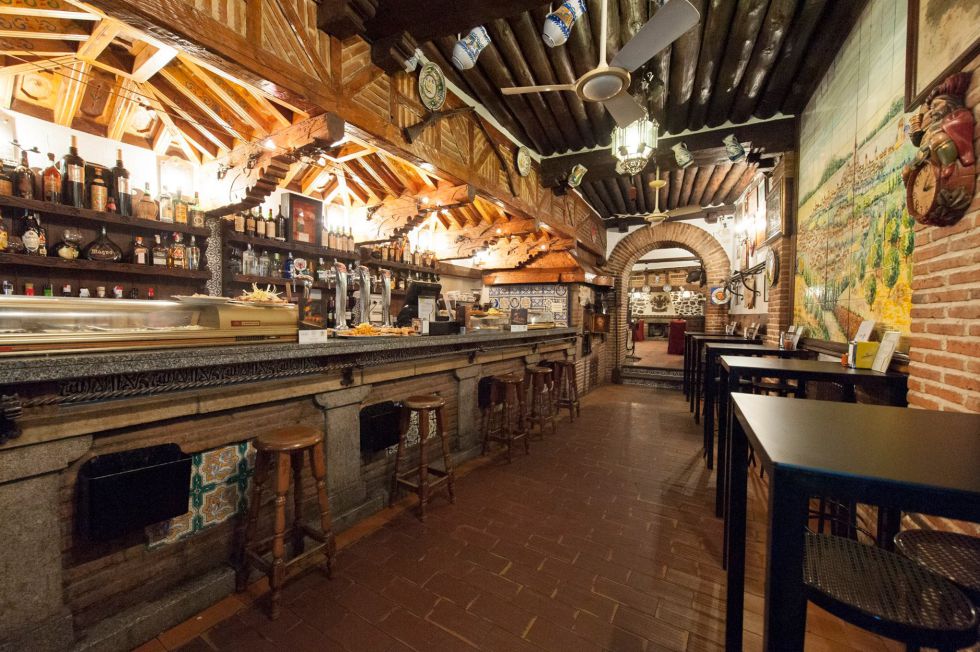
(Duque, one of Segovia’s most popular bars.)
A beer with an unstinting pincho is a must when going out for a beer with friends in Segovia. Just about every bar in this historic city, particularly around the main square next to the cathedral and the nearby Infanta Isabel street, which is lined with bars. Among the essential stop-offs on the tapa trail are bars such as San Miguel, Los Tarines, or Duque. Beers come in at around €1.20.
Vigo
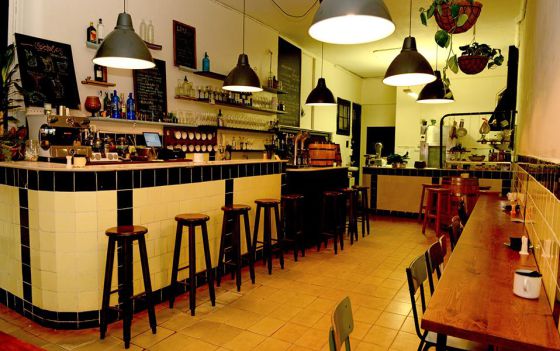
(A Mina, in Vigo.)
This Galician port city is known for the abundance and quality of its tapas, and a couple of beers or locally produced albariño wines will usually yield enough nibbles that you won’t need to eat afterwards. Try A Mina, a newish place that relies on favourites such as mussels. The Bouzas area is filled with old bars, along with newer establishments such as Patouro, which uses seasonal products such as mushrooms in autumn. Imperial, on Colombia street, has imported beers and generous tapas. Most bars charge around €1.60 for a beer or a glass of wine.